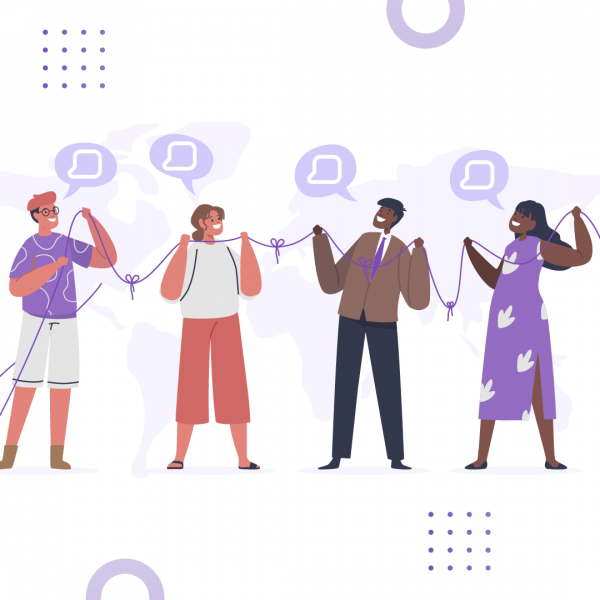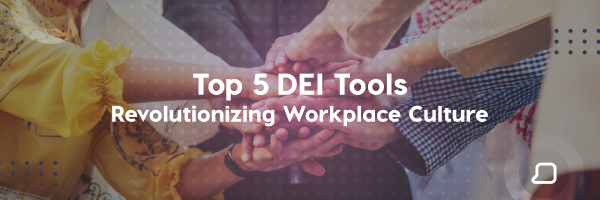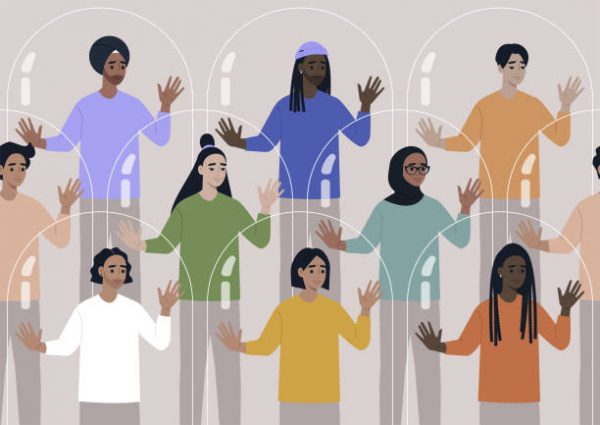
So, you’ve invested time, energy, and resources into cultivating diversity, equity, and inclusion (DEI) in your organization. Now, the big question is—is it working?
Sure, your teams might seem responsive, but without solid, quantifiable data, you won’t know if your efforts are hitting the mark or if it’s time to switch up your game plan.
And with countless ways to gauge the impact of your campaign, choosing a specific metric might seem daunting. But with the right approach, you’ll get valuable insights into your campaign’s success.
From employee-level to company-wide metrics, we will cover a wide range of metrics you can use to gauge your DEI efforts.
| Key Takeaways |
|---|
|
Employee-level Metrics
Let’s start at the heart of your organization—your employees. They’re the ones living and breathing your DEI initiatives day in, day out.
Their daily experiences will provide the most authentic measure of how well your DEI efforts are playing out. So, let’s break down these employee-level metrics and see what they can reveal to us.
Job Satisfaction
When your team members are content, it shows they’re more productive, engaged, and ready to bring their A-game.
And, a diverse and inclusive environment lays the foundation for this happiness and productivity. It gives employees a sense of belonging, a voice, and an opportunity to learn from different perspectives.
But how do we know if employees are actually satisfied with a DEI initiative and not something else?
Simple—ask them!
Surveys are a great way to assess your employees’ sentiments. They are a quick and efficient way to gather insights about your DEI initiatives directly from those experiencing them.
Through these surveys, you can measure your employee’s:
- Satisfaction levels
- Feelings towards their team dynamics
- Sense of recognition and belonging in the workplace
Pro Tip: To get the most out of your surveys, we recommend conducting them frequently so that you can easily identify any changes to your initiatives. You can also make them anonymous so that employees are encouraged to share their true feelings.
Retention
Let’s face it—finding talented employees is a challenge, and retaining them can feel even more difficult. While turnover is inevitable, DEI initiatives can give us a leg up in both attracting and retaining top talent.
When employees feel valued and heard, they’re more likely to stick around. It’s as simple as that. But how do you know that it’s your DEI efforts or the extra perks that are reducing your turnover?
This is where tracking employee tenure comes into play.
You need to really dig into the demographics of who’s staying and who’s heading for the door. Understanding the why behind their decisions to stick around or pack up can offer us some seriously deep insights into:
- Workforce dynamics
- Areas we need to address
- Overall atmosphere
Remember, retention is not just about keeping people—it’s about understanding their motivations, needs, and experiences.
Engagement
When employees are engaged, they’re not just clocking in and clocking out—they’re invested in their work and driven to contribute their best. They’re like secret weapons, driving innovation and moving the company forward.
While some employees naturally have that drive, a diverse and inclusive environment cranks up the volume for every employee by fostering a sense of belonging and recognition.
To make sure your initiatives are doing what they’re supposed to, you can organize and track employee resource groups (ERGs). These voluntary employee-led groups bring together individuals with shared characteristics or interests.
The level of participation in these groups can directly reflect the amount of inclusion and connection present in the workspace. The more participation you see, the more likely your DEI initiatives have the effects.
Leadership-level Metrics
Now that we’ve explored the employee-level metrics let’s shift our focus to the leadership level. It is without a doubt that company heads play a crucial role in the success of any organization’s DEI initiatives.
An inclusive leader sets the tone for the entire company and paves the way for a truly diverse and equitable organizational landscape.
Let’s delve into the specific metrics that can help you measure the effectiveness of your DEI initiatives at the leadership level.
Diversity in Leadership
Having leaders with different backgrounds, experiences, and initiatives will go a long way toward breathing fresh air into the company’s dynamics.
Different perspectives, experiences, and insights at the top will help protect different groups’ interests. And that’s not all.
With these pro-DEI leaders at the top, equality, and fairness will have a trickle-down effect, helping boost the effectiveness of these campaigns at the employee level. On top of that, diverse leaders bring unique insights to the table, sparking creativity and pushing boundaries.
To measure diversity in leadership, you can track the number and percentage of diverse employees in leadership positions.
Analyzing these metrics over time helps:
- Identify trends
- Highlight progress
- Identify areas that require further attention and improvement
By comparing these metrics to the overall workforce demographics, companies can identify any gaps and areas hindering them from accessing the benefits of DEI.
Leadership Commitment
Active involvement of the leaders is critical for spearheading the DEI initiatives of the company because they have the ability to influence the habits and culture of their teams.
When leaders demonstrate their commitment to diversity and inclusion, it sends a powerful message to the rest of the organization. This creates an atmosphere where everyone feels valued, respected, and included.
You can measure leadership commitment through:
- Tracking the percentage of leaders who actively sponsor or spearhead ERGs related to diversity and inclusion.
- Monitoring and evaluating the DEI achievements within each leader’s respective teams.
- Assessing leaders’ participation in diversity and inclusion training and development programs.
Company-level Metrics
Aside from measuring your DEI initiatives at individual levels, you need to assess how they are doing at the broader company level—taking the pulse of your organization, if you will.
This will help you understand prevalent challenges, gauge overall satisfaction, and provide insights that support your organization’s goal of creating an inclusive and diverse atmosphere.
Applicant Pool vs. Hires
An analysis of the diversity of job applicants compared to those who are actually hired can help identify any form of bias that is obstructing a free and fair recruitment process.
When biases such as race, ethnicity, or other factors are the criteria for employee selection, certain groups may be disadvantaged automatically.
To effectively measure the difference between the talent you attract and the ones you hire, consider adopting Diversity and Inclusion (D&I) software.
These tools can help you generate data on the demographics of applicants and hires, making it easier to identify areas where your hiring process can be further improved to foster diversity and inclusion.
Company-wide Diversity Distribution
For a truly inclusive organization, diversity should be woven into the fabric of your organization at every level, from entry-level positions to the highest echelons of leadership.
It’s crucial to understand how diversity is distributed across your organization to identify any gaps or areas that may need more attention.
To measure company-wide diversity distribution, it’s necessary to:
- Analyze demographic data across all levels and departments.
- Look for patterns and discrepancies.
- Determine if certain groups are underrepresented or overrepresented in specific areas.
Pro Tip: This analysis will help you identify potential barriers to diversity and inclusion within your organization and develop targeted strategies to address them.
DEI Investment
When a company devotes a substantial budget to DEI, it sends a clear message to employees, stakeholders, and the wider community that it values diversity and is actively investing in creating a more inclusive environment.
It shows that DEI is not just an afterthought or a box-ticking exercise but a fundamental part of the company’s strategic vision.
To effectively measure DEI funding, it is advisable to establish a dedicated body responsible for tracking and monitoring the budget allocation.
Additionally, this body should be responsible for evaluating the long-term impact of investments and notifying the company regarding any potential need for supplementary funding.
DEI Training Impact
Just as we train our teams on operational protocols or cybersecurity best practices, DEI training ensures everyone is on the same page about our commitment to an inclusive and respectful workspace.
When effective, these programs can raise awareness, challenge biases, and equip employees with the knowledge and skills needed to cultivate an inclusive work environment.
To measure the impact of DEI training, you need to:
- Track participation rates
- Assess how the course is being received, either by feedback or ratings
- Organize post-training assessments
Monitoring these metrics will help you see if the training is resonating with employees and effectively bringing about the change we aspire to see.
Incident Reports
Incident reports related to racism, bias, and discrimination provide insights into the climate and culture within your organization. These reports can shed light on areas where employees feel unsafe, unwelcome, or subjected to unfair treatment.
Maintain a record of incident reports and track the number and nature of these incidents over time. Aim to reduce the frequency and severity of incidents through proactive measures, such as:
- Education
- Awareness campaigns
- Transparent reporting mechanisms
By monitoring and addressing these incidents, you can create a more inclusive and respectful work environment.
Kickstart Your DEI Initiatives with Namecoach
Creating an all-inclusive and diverse environment is a long and tasking process that requires frequent assessment and pivoting. It’s a journey, not a destination. But, the best part is, you can begin this journey with only a single step.
Finding a partner to help you lay the foundation for your DEI initiatives can help you set the tone from day one, and Namecoach is there to help.
Namecoach helps eliminate one of the most common yet overlooked barriers in communication—the fear of mispronouncing names.
We provide you with the tools needed to help everyone feel confident communicating, fostering an inclusive culture that values and respects individuality right from the get-go.So, why wait? Set up a demo, and let us help you create an inclusive and respectful environment where everyone’s name is known, recognized, and correctly pronounced.









